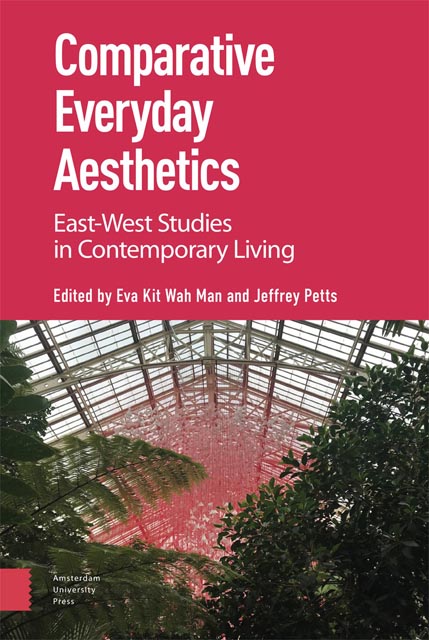Book contents
- Frontmatter
- Contents
- Living with Everyday Objects: Aesthetic and Ethical Practice
- Comparative Everyday Aesthetics: An Introduction
- Part 1 Living Aesthetically
- Part 2 Nature and Environment
- Part 3 Eating and Drinking
- Part 4 Creative Life
- Part 5 Technology and Images
- Part 6 Relationships and Communities
- Index
9 - Dô (Dao) in the Practice of Art: Everyday Aesthetic Life in Japan Through the Japanese Tea Ceremony
Published online by Cambridge University Press: 18 October 2023
- Frontmatter
- Contents
- Living with Everyday Objects: Aesthetic and Ethical Practice
- Comparative Everyday Aesthetics: An Introduction
- Part 1 Living Aesthetically
- Part 2 Nature and Environment
- Part 3 Eating and Drinking
- Part 4 Creative Life
- Part 5 Technology and Images
- Part 6 Relationships and Communities
- Index
Summary
Abstract
Art practice in Japan is intertwined with everyday life. The “tea ceremony” (cha-dô, literally the “way of tea”) is an example. This chapter focuses on the theory of the Japanese tea ceremony by Kakuzo Okakura and Yoshinori Onishi, exploring how everyday life is the main topic of modern Japanese aesthetics. The ceremony is an aestheticization of the ordinary action of drinking tea, testifying that beauty consists in treating the smallest incidents of life aesthetically. It is held in a teahouse designed for the ceremony, creating a space of conviviality. The focus of the tea ceremony is not a resulting work of art, but rather the process of performance, and also steady training in both a mental and physical sense. The essay argues that these characteristics are based on the Japanese understanding of the “dô” (in Chinese: dào) and that the creativity is not attributed to individuals but to it.
Keywords: tea ceremony, teahouse, dao aesthetics, Japanese aesthetics, cha dao
Introduction
Aesthetics as a modern philosophical discipline and the modern idea of art – both of which were established in eighteenth century Europe – were introduced in Japan in the late nineteenth century as a part of modernization or Westernization. At the turn of the century, however, aesthetics as a modern philosophical discipline took root in the Japanese intellectual world, where art was addressed chiefly in the context of everyday life. The idea of “the aesthetic life [biteki seikatsu]” – a term coined by Chogu Takayama (1871–1902) in 1901 – may be considered the leitmotiv of modern aesthetics in Japan and marked the Japanization of modern Western aesthetics. In my view, a traditional Japanese view of art in the sense of gei-do (literally “the way of art”) underlies this idea of aesthetic life. This chapter will focus mainly on the theory of the Japanese tea ceremony, cha-do (also pronounced as “sa-do,” literally “the way of tea”), by Kakuzo Okakura (1862–1913), also known by his sobriquet Tenshin, and Yoshinori Onishi (1888–1959) – two representatives of Japanese academic aesthetics in the first half of the twentieth century – and explore how and why everyday life became the main topic of modern Japanese aesthetics.
Art and Life
As a starting point for my argument, this section briefly examines the aesthetic theory of Ernest F. Fenollosa (1853–1908), who exerted significant influence on Okakura.
- Type
- Chapter
- Information
- Comparative Everyday AestheticsEast-West Studies in Contemporary Living, pp. 169 - 182Publisher: Amsterdam University PressPrint publication year: 2023



